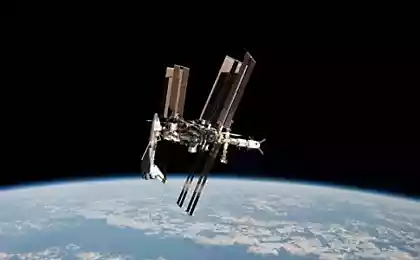135
NASA began testing the space sail on the solar wind
NASA announced the beginning of ground tests of the technology HERTS — a subspecies of space sail, working on the solar wind. The operation of this engine is based on the electrostatic repulsion of the spacecraft from charged particles.
The tests take place in a special chamber that simulates the flow of plasma from the Sun. The researchers placed a fragment of a sail in it - an electrically charged steel thread. The choice of steel instead of aluminum is due to corrosion resistance - in terrestrial conditions, aluminum will oxidize under the action of plasma, which cannot be expected in space. Physicists measure deviations of plasma protons caused by interaction with the filament – this will help to clarify the models of interaction of HERTS (Heliopause Electrostatic Rapid Transit System) with the solar wind in space.
According to the concept of the developers, the device will be an array of 10-20 thin charged aluminum wires, about 20 kilometers long. When deployed in space, they will cover an area of 219 football fields. The unfolding will occur due to the centrifugal force caused by the rotation of HERTS.
The acceleration that the apparatus will receive from the solar wind is due to the repulsion of its charged sails from protons flying from the Sun at a speed of 400 to 750 kilometers per second. The goal is to create a device capable of reaching the heliopause (the point of space where the solar wind is indistinguishable from the wind of other stars) in less than 10 years. The researchers note that unlike solar sails, driven by the pressure of light, electric sails are able to operate at distances greater than five astronomical units. According to the engineers, acceleration can occur at distances of about 16-20 astronomical units, while the pressure of solar photons ceases to be an effective source of acceleration already near the orbit of Jupiter.
The concept of an electric sail was proposed by a Finnish scientist, Pekka Janhunen in 2007. The first satellite with such an engine was launched in 2013. Sail ESTCube-1 consisted of 10-meter aluminum cables, but to test it fully failed because of the breakdown of the opening mechanism of the sail. published
P.S. And remember, just changing our consumption – together we change the world!
Join us on Facebook, VKontakte, Odnoklassniki
Source: nplus1.ru/news/2016/04/12/e-sail
The tests take place in a special chamber that simulates the flow of plasma from the Sun. The researchers placed a fragment of a sail in it - an electrically charged steel thread. The choice of steel instead of aluminum is due to corrosion resistance - in terrestrial conditions, aluminum will oxidize under the action of plasma, which cannot be expected in space. Physicists measure deviations of plasma protons caused by interaction with the filament – this will help to clarify the models of interaction of HERTS (Heliopause Electrostatic Rapid Transit System) with the solar wind in space.
According to the concept of the developers, the device will be an array of 10-20 thin charged aluminum wires, about 20 kilometers long. When deployed in space, they will cover an area of 219 football fields. The unfolding will occur due to the centrifugal force caused by the rotation of HERTS.
The acceleration that the apparatus will receive from the solar wind is due to the repulsion of its charged sails from protons flying from the Sun at a speed of 400 to 750 kilometers per second. The goal is to create a device capable of reaching the heliopause (the point of space where the solar wind is indistinguishable from the wind of other stars) in less than 10 years. The researchers note that unlike solar sails, driven by the pressure of light, electric sails are able to operate at distances greater than five astronomical units. According to the engineers, acceleration can occur at distances of about 16-20 astronomical units, while the pressure of solar photons ceases to be an effective source of acceleration already near the orbit of Jupiter.
The concept of an electric sail was proposed by a Finnish scientist, Pekka Janhunen in 2007. The first satellite with such an engine was launched in 2013. Sail ESTCube-1 consisted of 10-meter aluminum cables, but to test it fully failed because of the breakdown of the opening mechanism of the sail. published
P.S. And remember, just changing our consumption – together we change the world!
Join us on Facebook, VKontakte, Odnoklassniki
Source: nplus1.ru/news/2016/04/12/e-sail
How to know how much use different appliances in the house
DEVELOPMENT occurs from the point of rest























